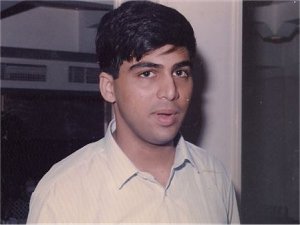Becoming World Junior Champion

Chess prodigy Vishy Anand
1985
At the start of 1984 Anand had taken part in the Indian National Championship, finished fourth, and was nominated to play for the Indian national team at the 26th Chess Olympiad in Thessaloniki, Greece. It was Anand’s first Olympiad and an impressive debut: with 7.5/11 he was the best Indian player and secured his second IM-norm.
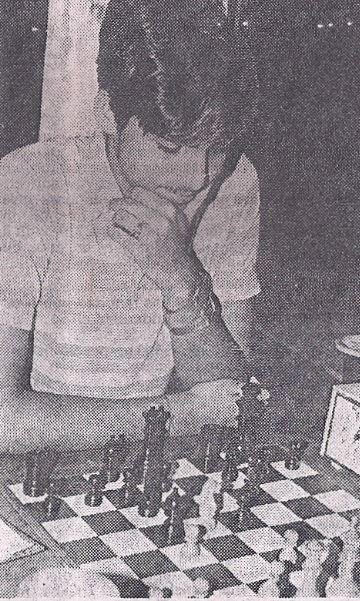
In 1985 Anand continued his string of successes. After a second place in the Indian Championship, he won the C.A. Sheppard Tournament at Calicut, Kerala, and finished sixth at the F.A. Ahmed IM Tournament in Delhi. Shortly afterwards he secured his third and final IM-norm by winning the Asian Juniors in Hong Kong for the second time in succession. This made Anand India’s youngest IM ever at that time.
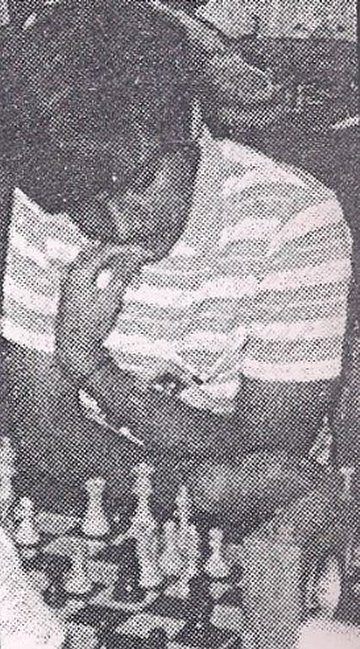
However, despite all his successes the fifteen-old year old Anand still had to beat a Grandmaster. He finally managed to so in England, at the annual Lloyds Bank tournament.
Enter the Dragon
Like in 1984 Anand breezed through the junior event but things were more difficult in the Open. After some huffing and puffing Anand finally finished fifteenth. However, he did manage to claim the first grandmaster scalp of his career – in impressive fashion and with lightning speed.
At the World Juniors in Sharjah, in the United Arab Emirates, Anand scored 8.5/10 and became fifth, tying, amongst others, with Vassily Ivanchuk. Upon returning home, Anand wrapped up the year with a victory in the R. Guruswami Naidu Memorial Open at Palani.
For his outstanding success as a junior chess player, Anand was bestowed with the Arjuna Award – the highest sporting honor for a junior sportsperson - by the Indian government.

Anand receiving his trophy for winning at Palani
1986

Tied for first at Arab-Asian Championship at Qatar
Another year began and with it came another National Junior Championship which Anand won with ease. At that time the junior players in India simply were no match for the young International Master. A bit later Anand tied for first at the Arab-Asian Championship at Doha, Qatar, and soon after that followed the Asian Team championship at Dubai, a memorable event for India: the team won silver while Anand won gold for the best result on board four, significantly contributing to the success of his team. While he made a killing on the lower board his team-mates stoutly defended.
His team-mate IM D.V. Prasad later said in an interview, “Even from a young age, I knew he was talented. The most astonishing thing about him is his memory, which I haven't seen in anybody. If Anand takes some sheets of paper with games, he just scans these games before putting them back and later, he would remember everything including the name of the player, the place the game was played, everything. I have never seen such an astounding memory in anybody.''

Not surprisingly, Anand was a natural brand ambassador for memory pills products
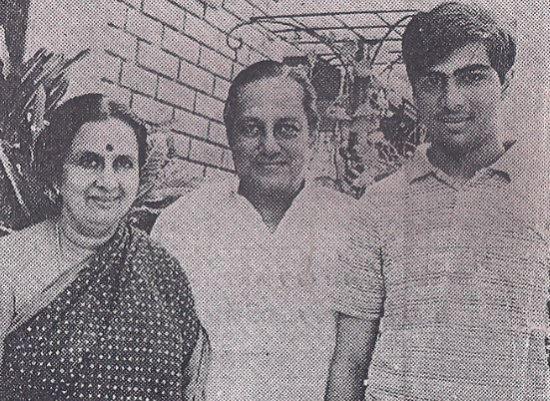
Susheela Vishwanathan and K. Vishwanathan with their son
There’s many a slip ‘twixt the cup and the lip
But Anand still had to overcome a number of obstacles to get the coveted grandmaster title. In those days India had no grandmasters and events, in which you had a chance to make a GM norm were rare. Progress in Indian chess was slow. That was to change soon but at that time Anand had to learn to be patient.

Anand analyzing at the Calcutta tournament with GM Soltis of USA (left) and Indian IM Vaidya
In the TATA Steel GM tournament 1986 in Calcutta, Vishy missed his first GM norm by half a point, and in the Lloyds Banks Masters later that year he missed it again, this time by a full point.

Lloyds Bank, 1986
Despite his many achievements, things did not always go smoothly for Anand. Sometimes he spoiled games because he was not patient enough. One example was his game against Soviet GM Makarychev at the Bhilwara International chess tournament in Delhi which attracted many spectators who wanted to see India’s young National Champion. Against Makarychev Anand at first seemed to live up to his reputation. By switching the calendar back to the halcyon days of the attacking masters, the young lad had already won a legion of fans, and on that day he had the Soviet GM on the ropes.

GM Makarychev playing against IM Vishy Anand at Bhilwara
In an exciting Sicilian, Makarychev, playing white, had launched a blistering attack with his pawns on the kingside while the International Master – sixteen years of age - counterattacked on the queenside, with the clock as his ally. After a delectable series of thrusts and counter-thrusts, the Soviet GM desperately sacrificed a pawn, only to land in a worse position – a pawn is a pawn after all. Moving with his trademark speed, the young boy was in the driver’s seat – until he blundered and lost.
The Bhilwara GM tournament was tailor-made for the youngster to score a norm but he finished a disappointing sixth – his only consolation being a win over the eventual winner GM Tukmakov.
However, Anand soon recovered and became third in the World Open 1986. Thus, many considered him to be favorite to win the 1986 World Junior Championship in Gausdal, Norway.
Anand indeed seemed to be coasting towards the title – till he came up against his Indian counterpart Dibyendu Barua. Barua was marked out as a prodigy in Indian chess circles when he qualified for India’s National Championships at age twelve. In terms of talent, the cognoscenti viewed them to be alike. But if it was his day, Barua could rip you apart at will – and it was Barua’s day.
This was Anand’s only defeat in the tournament – but it was enough to deny him the title. Vishy Anand had to wait another year for his next crack at the World Junior title – and in the process, learn his first lessons in the virtues of patience – not easy for someone known for his lightning speed.
The quickest survive, the slow die
The 1986 edition of the Indian Championship took place at the RCF Complex in Bombay. Evenings in March in Bombay are often pleasant and cool. But at the RCF Complex the atmosphere was heated. The reason for this was the new time control: the players had to make forty moves in two hours – half an hour less than they were used to.
As a result a lot of the older players were plagued by time trouble. For example, Pravin Thipsay, who had won the 1985 edition at Tenali with three rounds to spare, was relegated to play the National-B the next year. For Anand, the changed time-controls did not really matter. He rarely took more than 30 minutes anyway to win some of his games, and thus the 16-year old International Master adapted best to the change. To put it in Darwinian terms: the quickest survived and the slow died.
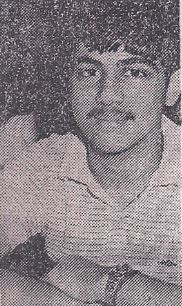
The young National Champion
Thus, Vishy Anand became the youngest champion in Indian chess history. At the chess Olympiad 1986 in Dubai he was promoted to top board and scored 7.5/11, but missed the elusive GM-norm once again.

Dubai Olympiad, 1986
King of his castle
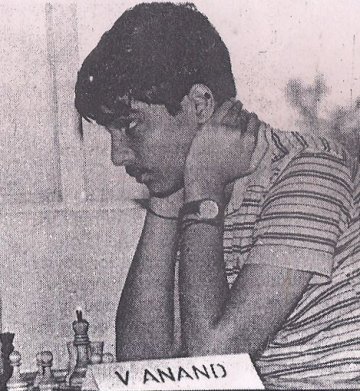
For Anand 1987 began with a triumph at the Indian Championship, which he won for the second time. He also played tournaments in the USSR and in America where, however, he had mixed results.
Then came the World Junior Championship, arguably Anand’s most important tournament in 1987. It took place in Baguio City, on the Philippines, where Anand had started his chess career, and Karpov and Kortschnoi in 1978 had played a bitter duel full of animosity and political tension for the World Championship.
A number of strong players started at the World Junior Championship including players such as Simen Agdestein from Norway, already a Grandmaster, and talented boys such as Andrei Sokolov and Ferdinand Hellers. And yes, in the list of participants another name appeared that was to resonate through the chess world in subsequent years: Vassily Ivanchuk.
When Anand arrived in Baguio he was in shaky form. He had just played the Philadelphia Open which in many ways was a disaster. Anand had played uncharacteristically badly in a number of games and had even missed a mate in one against an unrated opponent. He also had a lackluster start at the World Juniors, scoring only 2.5/4 in the first four rounds, well below par for a potential champion.
However, Anand has always had the knack to raise his game. There have been tournaments in his career in which he played well below his best – for example the recent GRENKE Chess Classic – but again and again he has recovered. Anand often also started tournaments badly, and then upped his game, seemingly at will. This ability is a trait of Anand’s game and its seeds were sown during his teenage years.

And after four rounds, Anand needed to move up a gear or two in the World Juniors 1987. He moved up six gears. Two fine wins in rounds five and six took him to 4.5/6, and then he faced pre-tournament favorite Agdestein. It was going to be the key game of the tournament.
Following this success, Anand won three more games. Then, in round nine it came to a clash between Anand and a player many saw as a potential World Champion: Vassily Ivanchuk. Anand had the white pieces and was not afraid to play a Ruy Lopez against Ivanchuk who, even as a junior, was renowned for his exhaustive knowledge of chess theory. Anand scored his fifth win in a row.
With 7.5/9 Anand was on a roll and in round 10 he went on to defeat Blatny in a complicated battle in the Modern Defense.
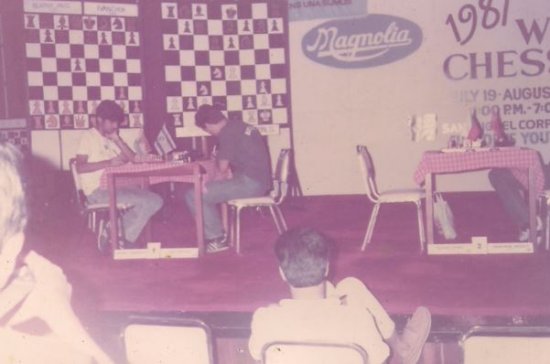
Facing Gad Rechlis from Israel
With 8.5/10 Anand only needed a draw in the 11th and final round to become World Junior Champion. His opponent was Gad Rechlis from Israel. But In the early stages of the game it seemed as if the tremendous mental effort involved in winning six straight games against the best juniors of the world had exhausted Anand - his opening play was strangely passive and he seemed to be sleepwalking.
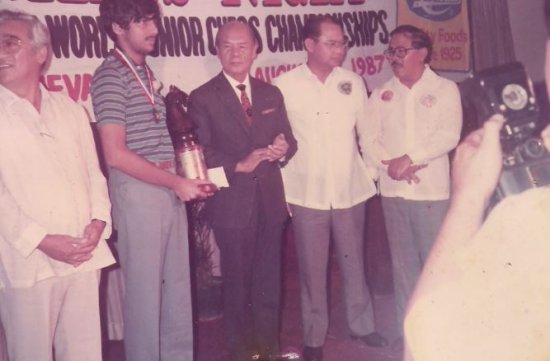
Champion!

The Indian team manager, Anupama Abhayankar, Vishy and T.P. Naraynan (Coach)
But after he got himself in a difficult position Anand woke up, showed brilliant defensive chess, and saved the draw he needed to become World Junior Champion.
On that day, and in this fashion, the world of chess crowned a new Junior champion, and Anand registered his first GM-norm.
(to be continued…)

Special thanks to IA V. Kameshwaran for sharing the valuable pictures and newspaper cuttings. Mr. Kameshwaran is the first International Arbiter from India and has acted as the official coach for young Indian players in their tours abroad. He is also a renowned chess journalist and had a career with the Income Tax (India).

Special thanks also to Naranayan Srinath for annotating the games. Narayanan Srinath is an International Master with three GM norms from India. He has been playing chess since the age of five and has numerous achievements to his credit, the most prominent being the world under-12 champion in 2005. He is a regular contributor at various blogs.
